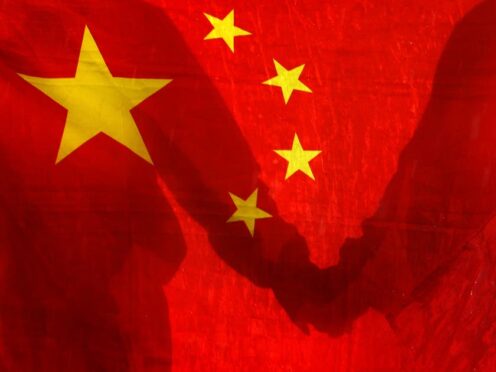
UK aid to China has fallen by 90% since 2019 – but transparency about how the money is spent is declining, a watchdog has warned.
The Independent Commission for Aid Impact (ICAI) found that engagement with Beijing across all of Government dropped from £80 million at the start of this Parliament to an estimated £8.2 million in 2023-2024.
However, there is only limited information in the public domain on how some aid funding, including the British Council’s to China, is being used, according to a report by the watchdog.
Transparency has further reduced this year with the decision to stop routinely publishing official development assistance (ODA)-eligible administration costs on a country-by-country basis, the ICAI said.
It follows a change in OECD guidelines on donor reporting of such costs, which now requires that donors do not assign them to a specific nation.
And despite an overall fall in spending, the ICAI found that the Foreign Office spent around twice as much on ODA-eligible administration costs – around £4 million – as it did on aid programme delivery in 2022.
The UK has been re-evaluating its relationship with China as the country takes an increasingly assertive stance globally.
Ministers have riled some more hawkish backbench MPs in characterising Beijing’s growing influence as an “epoch-defining challenge” rather than a threat.
ICAI commissioner Sir Hugh Bayley, who led the report, said: “There is still too little transparency over how UK taxpayers’ money is being spent in China, and we’re concerned it seems to be going backwards on the issue of ‘administration costs’ charged to the aid budget which can run to millions of pounds.
“As China will soon be ineligible to receive aid, it’s important that the Government ensures there is a proper strategy in place for the transition if dialogue with the country on issues of global importance such as climate change is to continue.”
While the British Council has made some efforts to improve transparency since the last update in its most recent annual review, it still does not publish data on implementation, results or expenditures of its country-level programmes, the report said.
Foreign Office aid to China continues through its arm’s-length body, the British Council, which currently has the largest portfolio of UK ODA to China with an estimated spend of £5.8 million in 2023-24.
The separately managed Chevening Scholarship Programme, which supports international students who want to study in British universities, spent an estimated £1.24 million in 2023-24 on scholarships for people from China.
The Foreign Office also spends money in Beijing through its global Forest Governance, Markets and Climate (FGMC) programme, which aims to cut the illegal use of forest resources, at just under £0.5 million in 2023-24.
In addition, the Department for Environment, Food and Rural Affairs (Defra) spent around £0.2 million in China last year through a fund aimed at tackling illegal wildlife trade.
A Foreign Office spokesperson said: “We are clear that there is no direct aid or funding to the Chinese authorities and funding only goes to specific programmes that support British values around open societies and human rights.
“Direct aid to the Chinese Government was stopped in 2011 and the FCDO committed to cut ODA funded programmes in China by 95% from the 2021-22 financial year.
“We remain committed to transparency and will continue to work closely with ICAI to ensure that all UK aid spending maintains our high standards of transparency and has the greatest impact.”

Enjoy the convenience of having The Sunday Post delivered as a digital ePaper straight to your smartphone, tablet or computer.
Subscribe for only £5.49 a month and enjoy all the benefits of the printed paper as a digital replica.
Subscribe